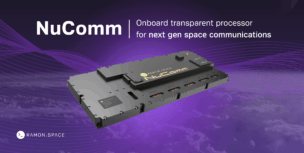The business of space was once primarily the domain of a handful of corporations and deep-pocketed governments.
The prohibitive costs associated with building and launching satellites and marrying space assets with ground infrastructure were beyond what smaller companies or startups could financially endure. Additionally, the unusually elevated risk once associated with rocket launches deterred interest from the investment community.
Metamorphosis: Today, the space industry is in the throes of a continued metamorphosis. And we’re not just talking about space tourism and sending celebrities and incredibly wealthy individuals into space. New technologies and innovations like reusable rockets and more adaptive technologies, developed by new space companies, have reduced both cost and risk.
Investment firms and legacy space companies have amped up investment, breathing life into a cottage industry of well-funded startups eager to capitalize on any number of space-related commercial opportunities. These companies are developing a wide range of space-powered applications from atmospheric and weather monitoring to smart farming and infrastructure planning, and more.
- In 2023, space companies raised more than $12.5B, according to Space Capital, eclipsing the previous year’s mark of $9.3B.
As the space environment becomes busier, the need for space-to-ground communications continues to increase.
- Commercial airlines need more capacity to continuously improve the quality and consistency of inflight connectivity, given its impact on passenger satisfaction.
- Commercial maritime companies struggling to find workers also need more capacity to offer enhanced communications on board their vessels so crews can keep in touch with friends and family and access entertainment and live sports during voyages.
- Governments and militaries always need more capacity to leverage real-time data and video communications that enhance situational awareness for soldiers in the field of battle.
Unique needs: But it’s not just capacity and speed demands that are increasing. The myriad of applications that have already been introduced, as well as those that continue to enter the market, require different levels and degrees of satellite-powered connectivity. Telemedicine applications or autonomous vehicle operations, for example, require the lowest possible level of latency for maximum effectiveness. For inflight entertainment applications, on the other hand, complete global coverage is more critical to avoid blackouts as a plane moves from one region to the next.
Multi-Orbit Satellite Connectivity
No one satellite network type can meet the unique and disparate needs of each satellite application. This is why multi-orbit satellite connectivity has emerged as the next innovation in the burgeoning satellite communications industry.
“Each satellite orbit has its respective advantages and strengths,” said Carmel Ortiz, SVP of technology and innovation at Intelsat. “GEO networks are tremendously resilient, highly efficient in capacity delivery, and offer great economics. Low- and Medium-Earth orbit (LEO and MEO) constellations offer complete global coverage, including over the poles, lower latency communications, and can be accessed via smaller, flat panel antennas.”
As the name might suggest, multi-orbit connectivity is the integration of different satellite networks into one seamless communications solution. Multi-orbit allows satellite users of all kinds to leverage and exploit the best of all these orbits with an enhanced level of redundancy, resiliency, and flexibility while circumventing issues related to network congestion.
“Our conviction for multi-orbit stems from the very simple fact that demand is not uniform. In fact, it is distributed unevenly, geographically and in size, and there is no single network (whether terrestrial or in space) that can cope with this range of possibilities. The best solution is to route the demand dynamically between the GEO or LEO orbit based on cost and availability, ultimately maximizing customers’ experience,” said Bruno Fromont, Intelsat’s chief technology officer.
Journalists in the field can use one network to send multi-gigabyte-sized stories to headquarters and another to report live from a remote location without a significant lag in transmission time. Commercial airlines operating in some of the most active and high-trafficked air corridors and first and emergency responders that descend in large numbers to a disaster area or around the world can be always assured of access to bandwidth.
Where we are: In today’s multi-orbit use cases, network selection is often predetermined based on various factors, including the application in use and location where connectivity is required. Users may need to manually switch from one network to the next or have their provider manage the process.
Where we are going: As technology and innovation progress, smart and automated switching capabilities informed by the needs of the application in use, the real-time performance of each network, and nearby demands for capacity, will enable networks to determine the orbit best suited for the requirement and respond accordingly, ensuring the most suitable and appropriate network is available to meet demand. Multi-orbit antennas embedded into smart farming equipment, atop military vehicles, and within commercial aircraft, will have the ability to access connectivity across networks and switch from one to another on the go.
“Multi-orbit technology offers us the ability to build a comprehensive relay system in space,” says Jean-Luc Froeliger, senior VP of space systems at Intelsat. “That means we use a satellite as a node to route various types of traffic without touching the ground, including government and scientific missions. It’s a game changer because it moves operations to a more secure space. Our government partners are particularly keen to drive this forward.”
This era of the commercial space sector has become a fertile ground for innovation, attracting investment from new and, in some cases, high-profile funding sources. As the space industry continues to evolve, multi-orbit connectivity will help accelerate the introduction of new solutions that will deliver benefits to all, not just billionaire space tourists.




